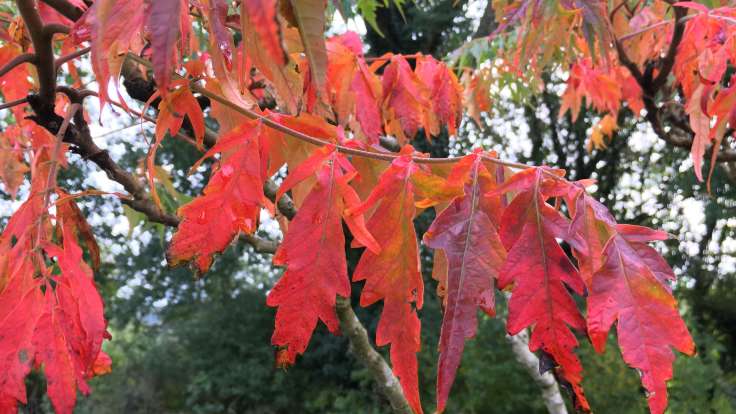
The glorious autumn colour of Rhus typhina laciniata in the forest garden
TL;DR low maintenance, productive, biodiversity, resilient 🙂
Forest gardening is a productive, low maintenance, wildlife friendly way to garden. It’s like a perennial vegetable plot, orchard and wildlife garden rolled into one. Here are four demonstrable benefits:
- Low maintenance – by design, forest gardens require far less work than traditional gardens. The majority of plants are perennial, so there’s minimal watering. There is a permanent living ground cover, so weeding is passing affair. The greatest amount of work is mowing the grass paths and harvesting the produce.
- Productive – a forest garden is a productive garden. This is usually edible crops (fruit, nuts, leaves, mushrooms, tubers etc) but it can also include dyes, firewood and building materials. And productive is a gloriously flexible word, encompassing aesthetics, people-space and a wildlife observatory.
- Biodiversity – a forest garden works with nature to create edible crops, so that all the nutrients, minerals, pollinators and pest predators are encouraged to make a home. This makes it wildlife friendly by default.
- Resilient – diversity is a critical feature of a forest garden. There is a wide range of available cropping plants and also a huge range of beneficial plants that don’t have a direct harvest (also known as system plants). These include pollinator friendly, ground cover and mineral accumulator plants. This network of diversity strengthens the garden as a whole, as well as providing alternatives should one particular crop fail.
Oh, and forest gardens are innately beautiful spaces. This is a subjective and biased opinion, so it doesn’t rate a bullet point but it is entirely true 😉.